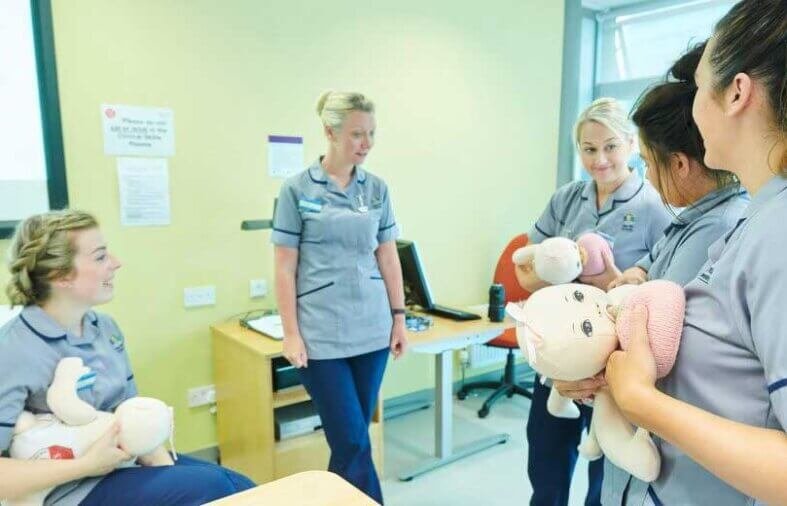Studying online lets healthcare workers earn their advanced degrees and connect with expert teachers and varied clinical practices, no matter where they live. Online midwifery courses combine solid theoretical classes with real-world training that midwives need to succeed in their work. Here are six features of high-quality online midwifery programs:
1. Comprehensive Curriculum
Online midwifery programs teach full knowledge of reproductive systems and their functions for all pregnancy stages. Evidence-based prenatal care often covers three main areas: what pregnant women should eat, regular health checks during pregnancy, and handling typical pregnancy complications. Midwives manage birth by knowing how to handle usual deliveries and emergencies and when to seek additional medical care.
After giving birth, midwives help mothers recover, teach them how to breastfeed, and watch for early indications of health problems. Midwives study how newborn babies adjust to life so they can monitor babies’ health and behavior. They also watch for key developmental changes during a baby’s first months. The study of pharmacology for midwives teaches about drugs used for expectant mothers during labor and birth and after delivery. Midwifery often blends health protection and community wellness views into its practices.
2. Structured Clinical Components
Students learn prenatal care by observing and then taking charge of patient exams and care plans during medical appointments. While working under close supervision, students assist with labor and delivery until they become the primary caregiver. Students usually conduct two types of postpartum care visits: right after childbirth and during follow-up appointments in different healthcare locations.
Students practice newborn assessment in both hospitals and communities while working with different groups of people. Working at birth centers teaches students how to handle births that occur outside of hospitals while following specific care practices. Students in community clinics learn to provide routine health care and help women with reproductive health needs. Hospital rotations train students to recognize and manage dangerous situations and perform medical treatments. Home visits can teach students how to work independently and focus on family-based healthcare.
3. Interactive Learning Platform
Most online courses use video-based learning tools, such as clear HD videos, to teach students how to perform clinical tasks and procedures. Virtual reality training lets students handle emergency medical situations without endangering real people. Case-based learning modules show students complicated situations where they must think critically and make critical decisions. Feedback tools give students instant instructions as they practice and take tests online. Students can work together on projects and help each other learn by using shared tools and discussion boards. They also learn how to use electronic health record systems, a key record-keeping system used on the job.
4. Regular Synchronous Sessions
Students should regularly participate in live online sessions where they present patient cases and talk with experienced teachers. Small group tutorials train students on how to perform clinical tasks and make decisions as they work with patients. New students can receive guidance on difficult topics from students who have already learned them. During faculty office hours, students can talk one-on-one with teachers about their progress in school.
5. Robust Assessment Methods
Many online programs use physical skill tests like Objective Structured Clinical Examinations to assess how well students perform clinical tasks and think through cases. Written tests measure students’ knowledge of theoretical information and how to use proven practices in midwifery. Through case studies, students show they can connect textbook knowledge to real-life situations. Clinical instructors closely watch students in practice settings and provide thorough feedback on their work. Creating a portfolio demonstrates what students have learned and accomplished as they move through the program.
6. Strong Student Support Services
Students are usually paired with academic advisors who help them pick the right classes and track their progress as they work through online midwifery programs. Career counseling helps students connect with employers and prepare for their certification tests. Virtual or on-campus learning may guide students in creating resumes and practicing for job interviews.
Enroll in Online Midwifery Programs
Online midwifery programs teach students theoretical concepts and provide real-world clinical practice through creative digital learning tools. Planned curriculum, clinic connections, engaging learning tools, and live sessions help students learn critical skills. Sign up for an online midwifery course today to further your nursing education.








